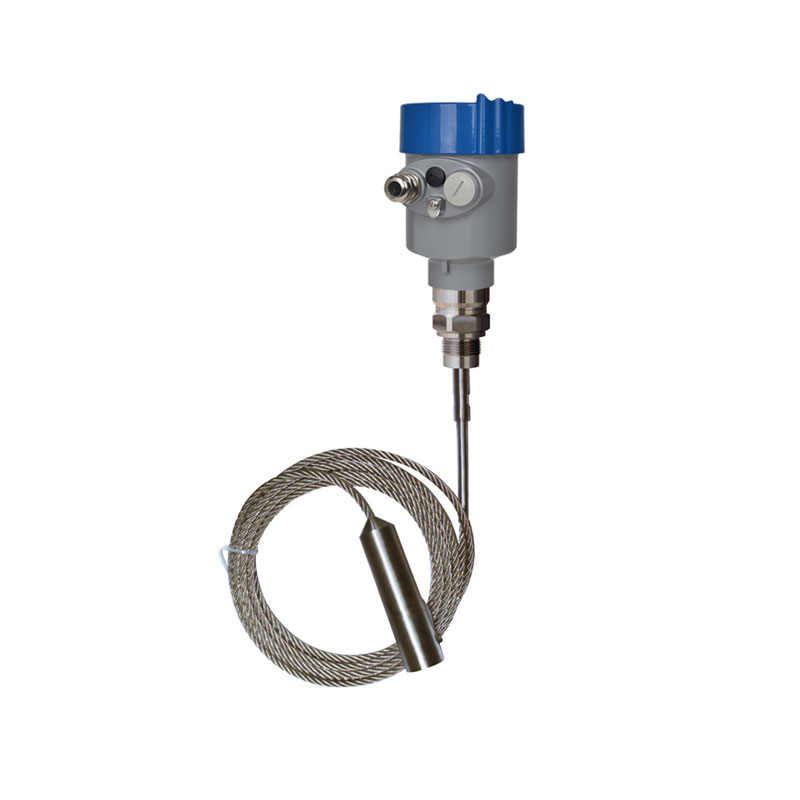Tianqiong Sensor IOT Technology Co., Ltd
Sales Manager:Ms. Emily Wang
Cel,Whatsapp,Wechat:+86 15898932201
Email:info@fengtutec.com
Add:No. 155 Optoelectronic Industry Accelerator, Gaoxin District, Weifang, Shandong, China

Sales Manager:Ms. Emily Wang
Cel,Whatsapp,Wechat:+86 15898932201
Email:info@fengtutec.com
Add:No. 155 Optoelectronic Industry Accelerator, Gaoxin District, Weifang, Shandong, China

Model:JC-1.8B
Brand:tianqiong
1.Guided wave radar level meter product principle
Guided wave radar level meter Guided wave radar for level measurement of liquids and bulk solids and has good performance in harsh environments.The high-frequency microwave pulses emitted by the guided wave radar propagate along the detection component (steel cable or steel rod). When encountering the medium to be tested, it causes reflection due to a sudden change in the dielectric constant, and part of the pulse energy is reflected back. The time interval between the emitted pulse and the reflected pulse is proportional to the distance of the medium to be tested.
2.Guided wave radar level meter technical parameters
Applicable media: liquid, solid powder
Application: Liquid and solid powder measurement, complex process conditions
Explosion-proof certification: Exia IIC T6 Ga/Exd ia IIC T6 Gb
Measuring range: 0~20 meters of liquid, 0~10 meters of solid powder
Frequency: 500MHz-1.8GHz
Antenna: Single-cable antenna
Measuring accuracy: ±10mm
Process temperature: (-40~250)℃
Process pressure: (-0.1~4) MPa
Signal output: (4~20) mA/HART
On-site display: Four-bit LCD programmable
Power supply: two-wire system (DC24V) / four-wire system (DC24V/AC220V)
Housing: Aluminum/plastic
3. Guided wave radar level meter product features
The antenna is small in size and is easy to install; non-contact radar, no wear and pollution.
Almost not affected by corrosion and foam; almost not affected by changes in water vapor, temperature and pressure in the atmosphere.
Severe dust environments have little impact on the high-frequency level gauge operation.
Shorter wavelengths and better reflect on slanted solid surfaces.
The beam angle is small and the energy is concentrated, which enhances the echo capability while also helps avoid interference.
The measurement blind spot is smaller, and it will also achieve good results for small tank measurements.
High signal-to-noise ratio allows better performance even in fluctuations.
High frequency is the best choice for measuring solid and low dielectric constant.
China has a vast territory with complex and diverse geographical environments and significant differences in climatic conditions. As a crucial link for power transmission, transmission lines inevitably traverse special geographical areas such as valleys, high - altitude peaks, and rivers. These spec...
In modern traffic management, real-time and accurate road condition monitoring is of great significance for ensuring driving safety and improving road operation efficiency. Traditional road weather stations typically require embedded installation, which not only damages the road structure but may al...
The construction of smart wetlands takes wetland monitoring equipment as the core, and combines Internet of Things (IoT), big data, and artificial intelligence technologies to build a three-dimensional monitoring network covering hydrology, meteorology, and ecology.The wetland weather stations...
In today's society, people are paying increasing attention to air quality. As an important component of the air, the measurement of negative oxygen ions is of great significance in many aspects. Firstly, negative oxygen ions can effectively purify the air by combining with particulate matter, ba...